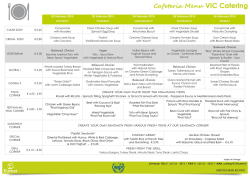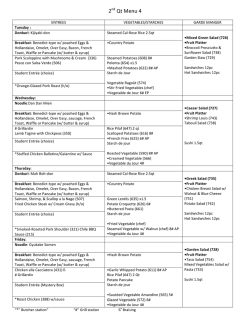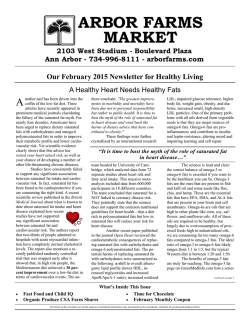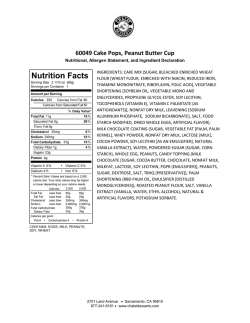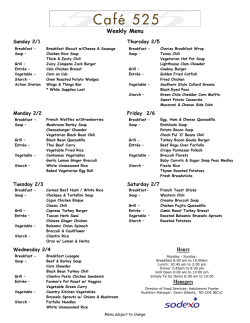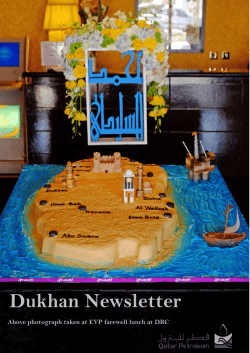
the Trans Fats Reduction Position Statement
UNILEVER’S POSITION ON TRANS FATS REDUCTION Background Trans fats, also known as ‘trans fatty acids’ (TFAs), naturally occur in small amounts in butter, cheese and meet. In the food industry, a process called ‘hydrogenation’ is used to convert vegetable oils into solid fats for greater functionality, stability and shelf life. When performed partially, this process produces trans fats. Importantly, however, full hydrogenation does not result in trans fat production. Evidence shows that both industrial and animal derived TFAs adversely affect the blood cholesterol profile and that the potential impact on coronary heart disease risk of equal intakes of animal derived and industrial TFAs can be considered similar. Public health authorities recommend limiting dietary intakes of total TFAs to below 1% of total dietary energy because of their established adverse effects on heart health. Context Since the discovery of TFAs adverse effects, a considerable decrease in TFAs intake has been made possible through technological developments that have led to the replacement of partially hydrogenated vegetable oils. The margarine industry has been at the forefront of this voluntary reformulation. Unilever’s position We strongly support the World Health Organisation (WHO) view that food manufacturers, retailers and others should remove trans fatty acids from the food supply and welcome that this has been identified as a “best buy” public health intervention by the WHO and the World Economic Forum. In 2010, we committed, as part of our Unilever Sustainable Living plan, to remove TFAs originating from partially hydrogenated vegetable oils (PHVO) from all our products. In September 2012, 100% of our portfolio by volume did not contain TFAs originating from PHVO.* This is true both in high income countries but also in middle and low income countries. In many countries in Europe and elsewhere, intakes of animal derived TFAs are now higher than those of industrial TFAs due to significant industrial reformulation. Public health measures and programmes to further reduce TFAs intake should focus both on the further elimination of partial hydrogenation of vegetable fats and industrial TFAs, as well as reducing the intakes of saturated fats, which will also limit the intake of animal derived TFAs. Further information From burden to “best buys”: reducing the economic impact of non-communicable diseases in low- and middle-income countries. Geneva: World Economic Forum & World Health Organization; 2011. http://www.who.int/nmh/publications/best_buys_summary.pdf FAO report of an expert consultation on fats and fatty acids in human nutrition. Geneva, 2008 http://foris.fao.org/preview/25553-0ece4cb94ac52f9a25af77ca5cfba7a8c.pdf Diet, nutrition and the prevention of chronic diseases. Report of a joint WHO/FAO expert consultation, 28 January-1 February 2002. Geneva, Switzerland (WHO Technical Report Series 916): http://www.who.int/nutrition/publications/obesity/WHO_TRS_916/en/. IMACE code of practice on trans fatty acids – February 2013 http://www.imace.org/files/files/public-website/European-Margarine-Sector-Code-ofPractice-on-Trans-Fatty-Acids.pdf * We have published our definition and approach to removing trans fats from partially hydrogenated vegetable oil. See: Melnikov, S., & Zevenbergen, H. “Implementation of removing trans fatty acids originating from partially hydrogenated vegetable oils”, New Food 2012; 5: 44-46. This approach focuses on main ingredients in our recipes and does not include traces of trans fats from partially hydrogenated vegetable oil that may be found in some flavours or emulsifiers.
© Copyright 2025
